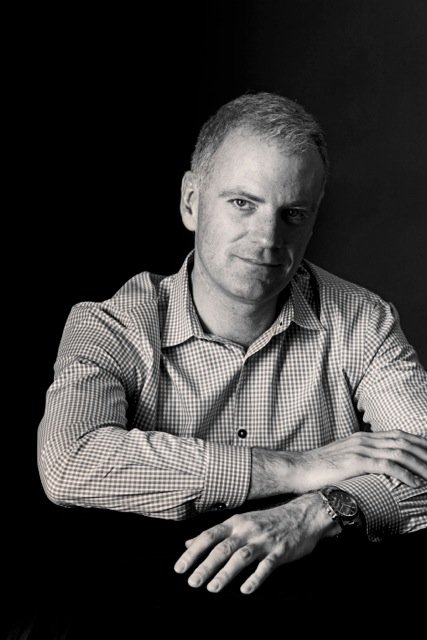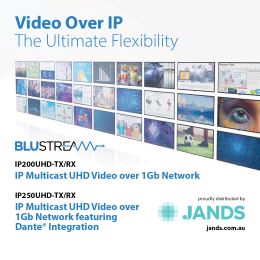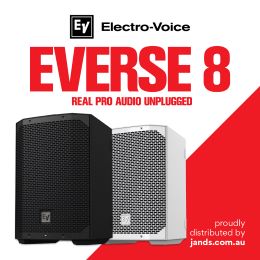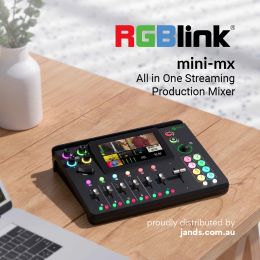Subscribe to CX E-News
Behind the scenes Hills have been restructuring and now what was once Hills SVL (previously Audio Telex Communications) now is but a memory. With changes at Crestron and the acquisition of Audio Products Group, we thought it was time to speak to the architect and engineer of change at the large company. Julius Grafton spoke to Brad Newton, the Chief Operating Officer (COO) of Hills Limited, at Integrate in Sydney.
CX: So what are the challenges?
Brad Newton: We’ve got a few things that we’re focused on this year. To give you some background, I joined 18 months ago. When I joined, we had 28 different businesses that we were holding, and we were basically reported a $90 million loss. And our debt was climbing at about $200 million. Now we’ve just released our financial results and we’ve turned that from $90 million loss to $27 million profit.
CX: Yeah, I read that.
Brad Newton: The other part of the story which is not necessarily stated that clearly is that we’ve taken that $200 million debt issue that we had and we’ve now got zero debt. In fact, I think we had about $10 million worth of cash and about $200 to $250 million worth of capacity to go and do something else in the market. From a turnaround perspective, it’s a massive restructuring within the business to get us to that outcome.
Twenty-eight different businesses that we we’re holding now down to a much more simplified structure, a much more simplified organisation. So the business that I’m focused on is the different value-added distributors. We’ve got DAS, Pacific Communications, SVL, OPS, our antenna business; we’ve got Intek in New Zealand and so forth. They all specialise in a building technology area whether it’s CCTV, access control or intrusion, whether it’s AV.
What we’re currently working on is bringing all those businesses together into a One Hills largest value-added distributor of building technologies in Australia and New Zealand. So that’s part of the challenge that we’re still working our way through, bringing those businesses together and getting the troops aligned with every hand on the pump at the same time, pumping in the same direction. We’re getting closer and closer by the day, but we’ve still got work to do.
CX: So with $200 million loss when you came in, was SVL proportionally in loss, or was it profitable as a unit?
Brad Newton: When I joined, SVL had probably three months of consecutive revenue decline. But in the last 12 months, SVL was probably our strongest performing business unit. Audio for us absolutely smashed it out of the park.
CX: It’s a big business.
Brad Newton: Smashed it out of the park. It’s a great business; exactly right. So we’re looking at Crestron (which) grew 80% year on year for us; the fastest growing region in the world for Crestron. Our SVL business was the largest contributor to our growth. So yes, SVL as a business achieved an extraordinary result for us the last 12 months.
CX: Yeah, but Crestron’s gone now in the sense that you’re handling logistics only?
Brad Newton: No, absolutely not.
CX: It was pretty unclear what the shift meant.
Brad Newton: No. Look, it’s still Hills employees; it’s still part of Hills. We’re still the exclusive distributor for Crestron in Australia, but Crestron is focused on representing their own identity. Crestron obviously has Stuart Craig working directly for Crestron. However, the other employees are all Hills employees. Hills still distributes Crestron exclusively in the Australian market.
CX: I see. I didn’t understand that properly.
Brad Newton: Right. We are also the exclusive distributor for Panasonic in Australia. So we have a service centre that services Panasonic CCTV systems and cameras in Australia. We are Panasonic in Australia. They have a presence in Australia; they have a small sales marketing team in Australia, but their products are exclusively distributed through our Pacific Communications business. This is the same as Crestron, exactly the same. Crestron needs to be able to represent itself clearly in the Australian market. It’s about Crestron. We’re the value-added distributor.
CX: Audio Products Group; what’s the thinking around buying this?
Brad Newton: It’s my job is to look at how do we become the largest value-added distributor of building technologies specialising in the areas of CCTV, access control, audio. Any technology that goes into a building, we want to be a value-added distributor for that. We want to be the largest in Australia and New Zealand.
Audio and audio-visual are components of building technologies that go into a building. So what we’re finding in the feedback that we’ve had from not only the construction companies, the consultants, integrators is what they want is they want to be participate across the spectrum of technologies that go in the building. They want to have a much more simplified business model where they go to a single distributor as much as possible for the supply of product. But also, what they’re looking for as well is how do we help them do the integrated design? A lot of these systems now obviously are talking to each other.
They’re all becoming IP based – the cameras, access control, AV systems are all on the one network. They’re all IP based; they’re all becoming more and more integrated. How do you participate in the larger projects; how do you participate from end-to-end; and how do you get support from your value-added distributor to help you with the design, the staging, the training, all those sorts of things. So our goal is to be able to provide that value in the Australian market. Putting APG aside, when we look at our current stable of value-added distributors, once we integrated those together, we will represent about $400 million worth of revenue in the Australian-New Zealand market. We’ve got about ten times more revenue than our nearest competitor. It’s about 17 times more staff. I think it’s about eight times more locations and branches across Australia and New Zealand than our closest competitor.
CX: But that $400 million, that’s represented by which divisions of yours?
Brad Newton: That’s all of our value-added distributors; security, CCTV, it’s SVL, it’s all of those brands together. We want to be able to go to an integrator – as an example, Fredon Technology – and we want to be able to say to Fredon we can help you with the CCTV on that project. We can help you with the AV. We can help you with the security and access. We can help you with the MATV. We can help you with a whole lot. We can help you design it. We can help you stage it. We can help train your guys. We can do all of that work for you. That’s the play that we want to have in the Australian-New Zealand market. And that’s the journey we’re headed on. With APG, our goal right now is – we’ve got a lot of integration work to complete with SVL and Pacific Communications and DAS and Intek and OPS and so forth, so we’re focused quite heavily on that. Our view is we’re going to keep APG completely separated, running under Ken Dwyer’s direction. Business as usual.
CX: Yeah. Ken’s a good guy.
Brad Newton: Ken’s a great guy and well respected in the audio industry, and we need to give him the support. We’ve got some benefits to add to APG. We’ve got a very, very strong balance sheet. The balance sheet, support, and access to capital and finance can help Ken grow his business and take away some of the limitations he would’ve had if he was running that as a private organisation.
CX: But it’s going to involve a reorganisation of brands.
Brad Newton: Look any reorganisation of brands I’m leaving up to Ken to work through as the head of APG.
CX: Particularly, he has opportunities there, too, because it’s a reorganisation of the playing field.
Brad Newton: Yeah, sure. We’re focused on making sure that we sit down with Ken. Ken needs to work his way through and develop out the plan for the brands. But we also need to do that it in conjunction with our brands, with our suppliers. So any decisions or any changes that Ken wants to make obviously has to be in conjunction with the suppliers, with brands as well.
CX: How do you characterise the SVL client base? Do they – the AV guys – have similar issues to the other units in the group, or do you see the SVL client base as being somewhat more precious? That’s my word, not yours.
Brad Newton: Well, there’s some complexity in there.
CX: Well, you’re facing this right across the board.
Brad Newton: No. Look, I think from a customer service perspective, we’ve gone through a very, very large restructure and reorganisation, and we’ve now come out the end of that. And one of the key messages that our CEO Ted Pretty had said to every employee at the start of this financial year is that the restructuring is over.
I think part of the challenge last year is about – as we rationalise and as we changed the company from a $90 million loss to a $27 million profit – we had to do a lot of change, and as a result of that change, a lot of our employees were under pressure, they did not know what the restructure meant to them. And that causes a lot of stress, and we appreciate that. And that’s why as soon as we completed the restructuring, the first thing we went and said to every single employee was, “Guys, restructuring is now complete.” So hopefully, that takes the pressure off and we can start to focus on stabilising and obviously growth. We had great growth year last year. SVL has been phenomenal – during the course of all of that restructuring and change – they have delivered phenomenal growth. So hopefully now, with the restructuring complete, everyone can get back to business as usual. That means even more growth for us this year.
CX: Yeah. There were criticisms with the call centre?
Brad Newton: Yeah, look, our intention all along is to provide better customer service. CX: On the other side of those criticisms, other people were saying, “Well, we’re not having the problem ‘cause we just dial a mobile number of our local SVL guy, and he sorts out everything for us, yeah? I guess it’s when those guys leave and that customer is then forced to deal with a call centre. It’s big difference from me ringing you, big difference to then ringing a call centre and trying to talking to someone about pro audio. Our intention with the call centre was how do we, as an organisation, deliver better customer service? And what does that mean? Our view of better customer service was freeing up our account managers to get out of the office; so instead of sitting there and answering the phone and entering orders into the system, we want our account managers, our sales guys, to be out in front of our customers, to be out in front of the integrators, working with them on ‘what do you need from us; how can we support you; what are the projects you’re working on that we can provide assistance and designs or training or build some materials and things like that’. So the goal of the call centre was to centralise a whole bunch of that administration work so that our sales guys could be freed up and get out on the road to visit their customers. That was our goal. So our goal from the start was ‘how do we deliver better customer service by getting our sales guys out on the road visiting customers’? Now, reality-wise, our customers didn’t want to be calling the call centre and didn’t want to be dealing with someone they didn’t know in the call centre.
CX: So it’s the about the sales guy, but what if the guy left ?
Brad Newton: Correct. They want to deal with the branches, and they want to be deal with the sales staff. So we’ve taken that on board, and we’ve taken that feedback and criticism, and we’ve rolled all of the calls from the national call centre back to the branches. We’ve taken staff out of the call centre, put on new staff out in the branches because we have responded to the feedback. And we’ll continue to respond to the feedback. Anytime we get constructive feedback, we will absolutely take it to heart and we will respond to it as long as it’s constructive.
CX: How constructive has it got to be? <laughs>.
Brad Newton: There is a constructive element to all feedback, right?
CX: Well, I’m curious about you – because you have a good overview of a wider technical industry, are we AV people in the SVL-type world all that different to the rest of your clients?
Brad Newton: No, I don’t think so. I think CCTV and security are very similar. I think whether it’s fast or slow, the world is changing and I come from the IT industry; I have an IT background. I was over in Vegas at Infocomm and it’s fascinating because the AV industry is starting to emulate the IT industry. It’s about integrated solutions. It’s about lots of new functions and product releases. That’s just like the IT industry. The IT industry drives sales through releasing a new product and new functions and new technology and new capability on a very fast product cycle release frame. And in the AV industry, what I’m starting to see – because I’ve now been involved in the last 18 months and I’ve been to a number of the trade shows and I’ve spoken with a number of suppliers – is the IT industry being emulated in the AV industry. It’s becoming more connected, it’s becoming all network and IP based, and there are more and more technologies and functions being added to all products.
CX: We in AV are more disparate, we’re not operating-system dependent. So to you, did it look weird when you started to analyse it?
Brad Newton: I think it’s a hugely fascinating time for AV, and I think this whole industry – and part of the reason we invested in APG was we see it as a growth industry. AV is a growth industry. CCTV is a growth industry because there’s an enormous amount of analogue systems out there that need to be updated and upgraded to IP. AV is the same. It’s a growth industry because it has to go through and it will go through a major refresh. All the suppliers are doing an amazing job in bringing these integrated solutions that add significant value to the older legacy systems. Customers will want to upgrade because it’ll unleash a whole bunch of extra power and capability they haven’t had before. I think it’s an exciting time for the AV industry, but it has to go through some change and will go through some changes as customers – I think customers have become more demanding because all of this technology is available for them now.
CX: So what have you found surprising in analysing AV industry?
Brad Newton: My biggest surprise is how connected to these other building technology pieces it really is. I sit across CCTV and I sit across security and some of these other building technology areas and I’m seeing the integration benefits. I’m seeing the crossover between these different industries. They’re becoming more and more connected, and that’s what I’m starting to see. So I think the AV industry has a huge opportunity to take advantage of that by branching out and looking left and looking right into some of those adjacent technology areas.
CX: Yeah, it’s the looking around that’s critical because you go into a brand new performing arts centre, there’s the evacuation system, the building management system, the audio visual – and it’s all different, and it hardly talks.
Brad Newton: But the customer wants it to talk together, and the customer wants it to be simplified and easier to manage, and I think that’s the opportunity for all of us in this industry.
CX: Yeah, the problem is there’s no one consultant or there’s no one architect –
Brad Newton: Yeah, exactly.
CX: – who has those skills. How do you –
Brad Newton: And that’s the challenge. So that’s right.
CX: As a market leader then, how do you embrace the education shift, and what –?
Brad Newton: It is a great question so I’m glad you asked me because one of the key focuses for us this year is training. I think we trained about 3,000 individuals last year, and this was on industry ready programs, it was on basic 101 IP networking, and it was on product as well. We’ve got 26 branches across Australia and New Zealand. Every one of those branches has a dedicated training facility built within the site. Our job this year is to go from training 3,000 people last year to double or triple that. Success for me looks like tripling that number. But not just tripling that number for the sake of it, but adding really strong value-added training to our integrators to make their jobs and their lives easier, and that’s what we’re going to focus on. So as a massive player in the market, the largest player in the market, I think we have the capacity to make significant investments in providing that training. We’re focused on rolling out training. We have just hired a professional learning and development specialist who is going to help us actually deliver training at a much higher-level standard.
CX: You haven’t had any criticisms in training, which is really good. Not from the SVL world, anyway.
Brad Newton: We can always improve and do a better job.
CX: The challenge there is engaging so people actually get trained ‘cause they gotta give up time to do it.
Brad Newton: Yeah, exactly. And it’s hard, so we have to be smarter about how we do the training, where we offer the training. I think we’ve got the foundation; we’ve got the capacity; we’ve got the balance sheet to be able to really dominate in the area of providing quality training. We’re taking it seriously that’s why we’re gone and hired a learning and development expert to come and help us lift this scale of training that we add in the market.
CX: There’s a lack of a common qualification framework in audio visual completely. It’s just so surprising.
Brad Newton: I think you’re right. I think there’s the Crestron training, and there’s the audio training, and there’s some training around specific suppliers and brands. But I think there’s the other stuff, such as the core training, IP networking and all those sorts of things. And I think we’ve got those courses built. We’re delivering it in some capacity, but we need to be able to up the ante and I’m going to focus on that this year. If I look at what our key focus areas are this year, one of them is to deliver training. It’s really anything that’s going to be a value-added service to our integrators. Our job is we’re a distributor. That’s what our job is, and we know that. That’s where we exist in the value train. The more value-added services I can offer to the industry, the better. We’ve released a financing option for some of our integrators, where there is a large project and the customer doesn’t have access to capital. We’ll help facilitate to the integrator a financing option to be able to be presented to the customer.
CX: Is that just to the project completion stage?
Brad Newton: No, it’s to fund the whole works. So it really depends on what the customer and the integrator want.
CX: What kind of customer would typically engage that?
Brad Newton: An interesting one that we did recently in Queensland was a government department working with an integrator that did need it. This was a massive CCTV roll out.
CX: There’s no risk in that.
Brad Newton: We’ll look at services around financing things like that if the integrator sees value in it. Staging and developing and integration services – we’re going to try and do that and then we’re going to focus a lot this year on our tech support. We want to be the industry leader in level one, level two, and level three tech support. Right now in the business, I’ve got 80 people sitting in various support roles across the Hills Building Technologies value-added distribution part of the business. What I need to do is get those 80 people focused on delivering the best technical support in the industry.
CX: It’s a massive umbrella, though. I mean, that’s 80 people across a lot of technologies.
Brad Newton: 80 people in support are bigger than some of our competitors’ entire organisation, it’s really four of five key areas.
CX: So what kind of information system are those people going to be drawing on?
Brad Newton: Yeah so we’ve got Salesforce and we’re using Service Cloud, which is an add-on to Salesforce, and we’re building our knowledge bases as part of our Service Cloud implementation. We’ve already done a fair bit of work down the path of centralising the knowledge around various common, known challenges and issues related to a supplier, and it’s all about support people who have access to that knowledge base which is in Service Cloud. Previously, as an organisation – as Hills – we never tracked why a customer called; we never tracked how we resolved their issue; we never tracked what the issue was; we never tracked how long it took us to solve their issue. We’re now starting to do all that because that’s helping us become better and better and more efficient at being able to resolve customer issues. You’ll hopefully see over the next six to 12 months, we’ll make considerable progress forward on that. My key KPI for me this year is obviously I’ve got to make the revenue targets and end of year targets, but I’m going to focus on delivering the best value-added services and support in the industry, and that’s what’s going to make – that’s what I believe is going to make the biggest difference for our suppliers and our integrated customers.
CX: You seem quite enthusiastic about it.
Brad Newton: I am. We are standing on a huge opportunity. I think the hard work, the really big, disruptive hard work that we had to go through – the transformation is now complete. For us now, it’s about fine-tuning every hand to the pump, pumping in the same direction and really making a difference to the industry. And I think we can; I think we have the capability to do that.
Subscribe
Published monthly since 1991, our famous AV industry magazine is free for download or pay for print. Subscribers also receive CX News, our free weekly email with the latest industry news and jobs.












